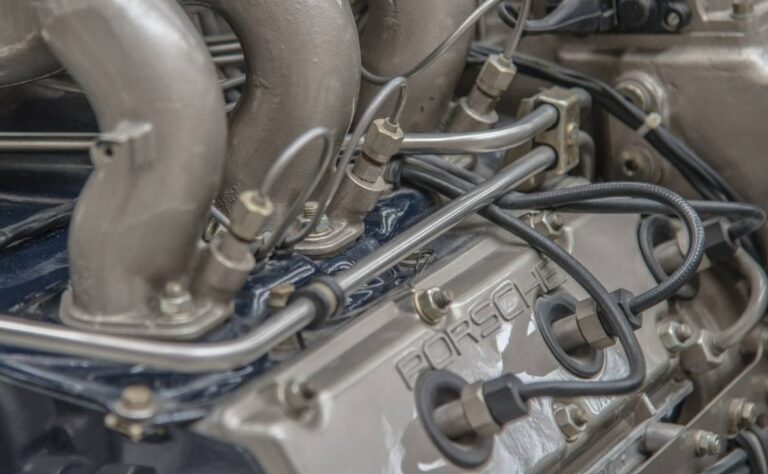Can Seafoam Hurt Your 2-Stroke Engine? Quick Answer
Are you looking for Can Seafoam Hurt Your 2-Stroke Engine? This question lingers in the minds of many engine enthusiasts and mechanics. As a widely used additive, Seafoam boasts of cleansing and lubricating properties, but its impact on 2-stroke engines often stirs debate. Understanding the nuances of Seafoam’s interaction with 2-stroke engines is crucial for optimal maintenance and performance.
Key Takeaways
- Effectiveness of Seafoam: Seafoam can clean and lubricate 2-stroke engines but must be used correctly.
- Risks and Benefits: Potential risks exist if misused, but benefits are notable when applied appropriately.
- Engine Health: Regular use of Seafoam can prolong engine life if used in the right proportions.
Can Seafoam Hurt Your 2-Stroke Engine?
No, Seafoam generally does not hurt a 2-stroke engine when used according to the manufacturer’s recommendations. It is designed to be safe for use in 2-stroke engines for cleaning and maintaining the fuel system.

However, incorrect usage, such as exceeding the recommended amount or frequency, can potentially lead to issues like over-dilution of the oil mix and reduced lubrication, which could harm the engine. Therefore, it’s essential to follow the correct usage guidelines.
The Impact of Seafoam on 2-Stroke Engines
Understanding the Composition of Seafoam
Seafoam, a petroleum-based engine additive, is formulated to clean internal engine components and stabilize fuel. Its primary ingredients include pale oil, naphtha, and isopropyl alcohol.
These components work together to dissolve deposits, moisture, and old fuel residues, enhancing engine performance and longevity.
Seafoam’s Interaction with 2-Stroke Engines
In 2-stroke engines, Seafoam performs multiple functions. It cleans the carburetor, fuel lines, and combustion chamber. However, the unique lubrication needs of 2-stroke engines require careful consideration.
Since these engines rely on fuel mixed with oil for lubrication, adding Seafoam directly to the fuel can alter the fuel-to-oil ratio, potentially leading to lubrication issues.
Balancing Seafoam Use in 2-Stroke Engines

Recommended Usage and Dosage
For optimal results, the correct dosage of Seafoam in 2-stroke engines is imperative. Manufacturers typically recommend a mixture ratio of 2% Seafoam to fuel. Exceeding this ratio can lead to over-thinning of the oil, impacting the engine’s lubrication.
Potential Risks of Overuse
Overuse of Seafoam in 2-stroke engines can lead to several issues. It may cause excessive thinning of the oil, resulting in inadequate lubrication and increased wear and tear. Moreover, it might lead to the build-up of carbon deposits, contrary to its intended purpose of cleaning.
Seafoam and Engine Performance
Enhancing Engine Efficiency
When used correctly, Seafoam can significantly improve the efficiency of 2-stroke engines. It aids in removing harmful deposits, ensuring smoother operation and better fuel efficiency.
Long-Term Engine Health
Regular, but measured, use of Seafoam can extend the lifespan of 2-stroke engines. It helps in maintaining clean internal components, reducing the likelihood of engine breakdowns and costly repairs.
Real-World Experiences and Expert Opinions
Testimonials from Mechanics and Users
Many mechanics and engine enthusiasts report positive experiences with Seafoam in 2-stroke engines. They highlight its effectiveness in cleaning and maintaining engine health, especially in older models.
Expert Recommendations
Experts in the field recommend cautious use of Seafoam in 2-stroke engines. They advise adhering to the manufacturer’s guidelines and considering the specific requirements of each engine model.
Comparing Seafoam with Other Engine Additives

Seafoam vs. Other Additives: Effectiveness and Safety
While Seafoam is a popular choice, other additives in the market offer similar benefits. Comparing their effectiveness, safety, and suitability for 2-stroke engines is essential for making an informed decision.
User Experiences with Alternative Additives
User feedback on alternative engine additives provides valuable insights into their performance in real-world scenarios. Such comparisons can guide users in choosing the right product for their 2-stroke engines.
What Is The Best Fuel For Two Stroke Engines?
The best fuel for two-stroke engines is typically high-quality, unleaded gasoline mixed with a specific type of two-stroke oil. This mixture ensures proper lubrication and combustion within the engine.
The ratio of gasoline to oil varies based on the engine manufacturer’s specifications but is commonly around 50:1 or 40:1. Using premium unleaded gasoline with a high octane rating is generally recommended to avoid issues like knocking and pinging.
Additionally, for engines used in outdoor power equipment, non-ethanol gasoline is often preferred to prevent fuel system damage and maintain engine health.
Can You Put Sea Foam In A Dirt Bike?
Yes, you can use Sea Foam in a dirt bike engine, both for maintenance and to resolve specific issues like clogged carburetors or stale fuel. For regular maintenance, adding Sea Foam to your fuel mix can help clean the fuel system and reduce moisture buildup.

The typical recommendation is to add about 1 ounce of Sea Foam per gallon of fuel. However, it’s important to follow your dirt bike manufacturer’s guidelines regarding the use of additives like Sea Foam. Overuse or incorrect application could disrupt the balance of your fuel-oil mixture, potentially harming a two-stroke engine.
How To Use Sea Foam In An Outboard Motor (2, 4-Stroke)?
For a 2-stroke outboard motor, Sea Foam can be added directly to the fuel-oil mixture to clean and lubricate the engine. The recommended amount is typically 1 ounce of Sea Foam per gallon of fuel. This helps in cleaning the carburetor, injectors, and combustion chamber.
For a 4-stroke outboard motor, Sea Foam can be added to the fuel tank to clean the fuel system. Additionally, it can be used as a stabilizer to keep the fuel fresh during periods of non-use.
Always refer to the outboard motor’s manual and Sea Foam’s guidelines for specific usage instructions to ensure proper application and avoid any potential engine damage.
Conclusion
In conclusion, Can Seafoam Hurt Your 2-Stroke Engine? It’s a matter of usage and context. Seafoam, when used in moderation and according to manufacturer guidelines, can be a boon for 2-stroke engines.
It cleans, lubricates, and enhances engine performance. However, overuse or incorrect application can lead to potential harm. Thus, understanding and respecting the balance is key to leveraging the benefits of Seafoam in maintaining the health and efficiency of 2-stroke engines.
Frequently Asked Questions
How does Seafoam compare to other engine additives for 2-stroke engines?
Seafoam is known for its versatility and effectiveness, but other additives may offer specific benefits or formulations. Comparing products based on their intended use, safety, and compatibility with your engine is advisable.
Can Seafoam improve fuel efficiency in 2-stroke engines?
By cleaning the engine’s internal components and removing deposits, Seafoam can improve fuel efficiency. A cleaner engine typically runs more efficiently, utilizing fuel better.
Is Seafoam suitable for all types of 2-stroke engines?
Seafoam is compatible with most 2-stroke engines. However, it’s important to consult the engine’s manual or a professional mechanic for specific recommendations, especially for high-performance or older engines.
Does Seafoam help with engine starting issues?
Seafoam can help resolve starting issues caused by fuel system blockages or deposits. It cleans the carburetor and fuel lines, enhancing the engine’s starting and running performance.

Welcome to the exhilarating world of Matt Rex, a professional car racer turned renowned vehicle enthusiast. Immerse yourself in his captivating blog as he shares heart-pounding adventures, expert reviews, and valuable insights on cars, trucks, jets, and more. Fuel your passion for speed and discover the beauty of vehicles through Matt’s engaging stories and meticulous expertise. Join the ever-growing community of enthusiasts who find inspiration and expert advice in Matt Rex’s blog—a digital hub where the thrill of speed meets the pursuit of knowledge.







